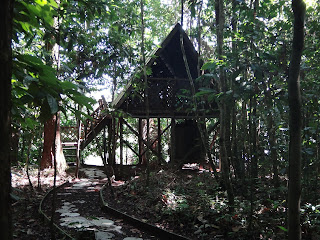For those of you looking for how to get your passport both through documents and directions skip down to the last paragraph.
Its been 10 years now and that guy on my passport doesn't look too much like me anymore. I took that photo in a Walgreens on the way to Chicago with my mother. I was apply for my first adult passport because I was traveling to China to meet my friend David. Soon after I got my first visa, a big one page Chinese tourist visa was inside. By the end I think I had four of those one page Chinese visas, plus a few more 1 page visas.
I love my old beat up passport, but it was time to get a new one and so I had to get one here in Malaysia. Malaysia, the 22nd country I visited/lived in with this passport. In all there are 23 countries logged in this one. 97 flights under that passport, about a dozen motor car border crossings. I love to look at the stamps and remember each journey. Even though I had to get more pages a few years ago I was reaching the end of those as well and would have had to get a new passport sometime soon, time to say goodbye to my old friend.
So in order to get a new passport I had to fill out some documents online (then print them) from the US embassy. Passport renewal is pretty straightforward as you need only those forms, a form of ID (old passport will do), some cash, and a passport photo. Unfortunately citizen services is only open from 9am to 11am weekdays, so it was hard to coordinate a day to get there. In Malaysia you can't send in your passport by mail as you can in other places/ if you are of other nationality. You have to physically go there. If you have the proper documents and such the process is pretty quick. It took me about 20 minutes to wait, be called on, and get the documents in. Then they give you a slip of paper, green, as a receipt for your new passport. You do not need to go in person to collect it, anyone who has the slip can get the passport. I ended up going myself to retrieve it as well and that was even faster. Getting to and from the embassy can be tricky, but it need not be. I've posted a map google gave me for walking from my hotel in Bukit Bintang. It took me about 40 minutes to walk that distance and it was easy to keep to the correct streets. If you drive, as I did the first time, just keep on Jalan Tun Razak. Initially you will likely be driving under an elevated highway. Just keep going until the road starts to rise and there is no highway above you. At this point you will see an elevated walkway going over the road. Just after this is the embassy. Pass the embassy and take the next left. This will lead you into a residential area where you can park for free and from which its less than 5 minutes to walk to the embassy. The embassy has no official parking, so this is likely your best option to get your shiny new, American passport.












